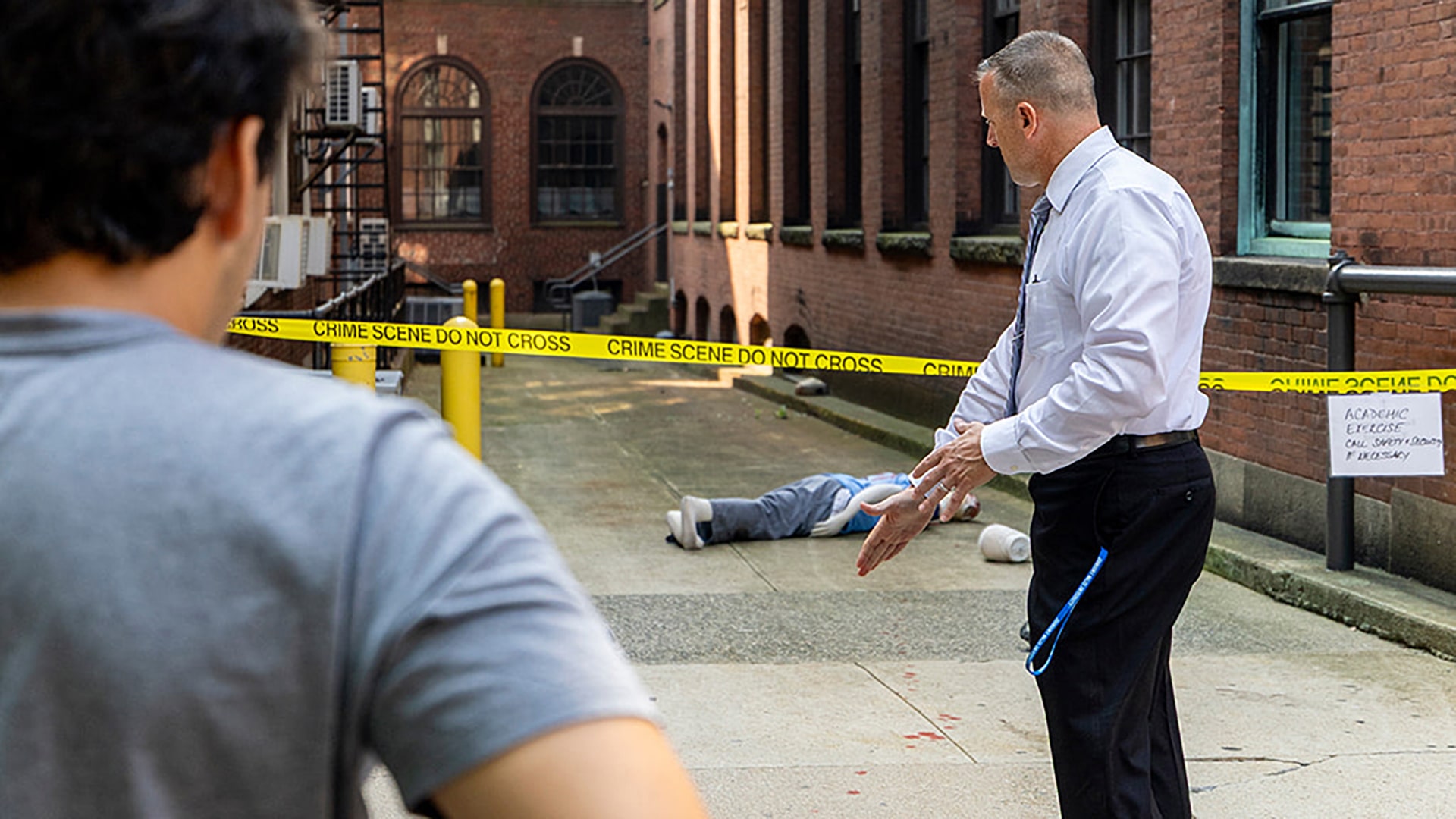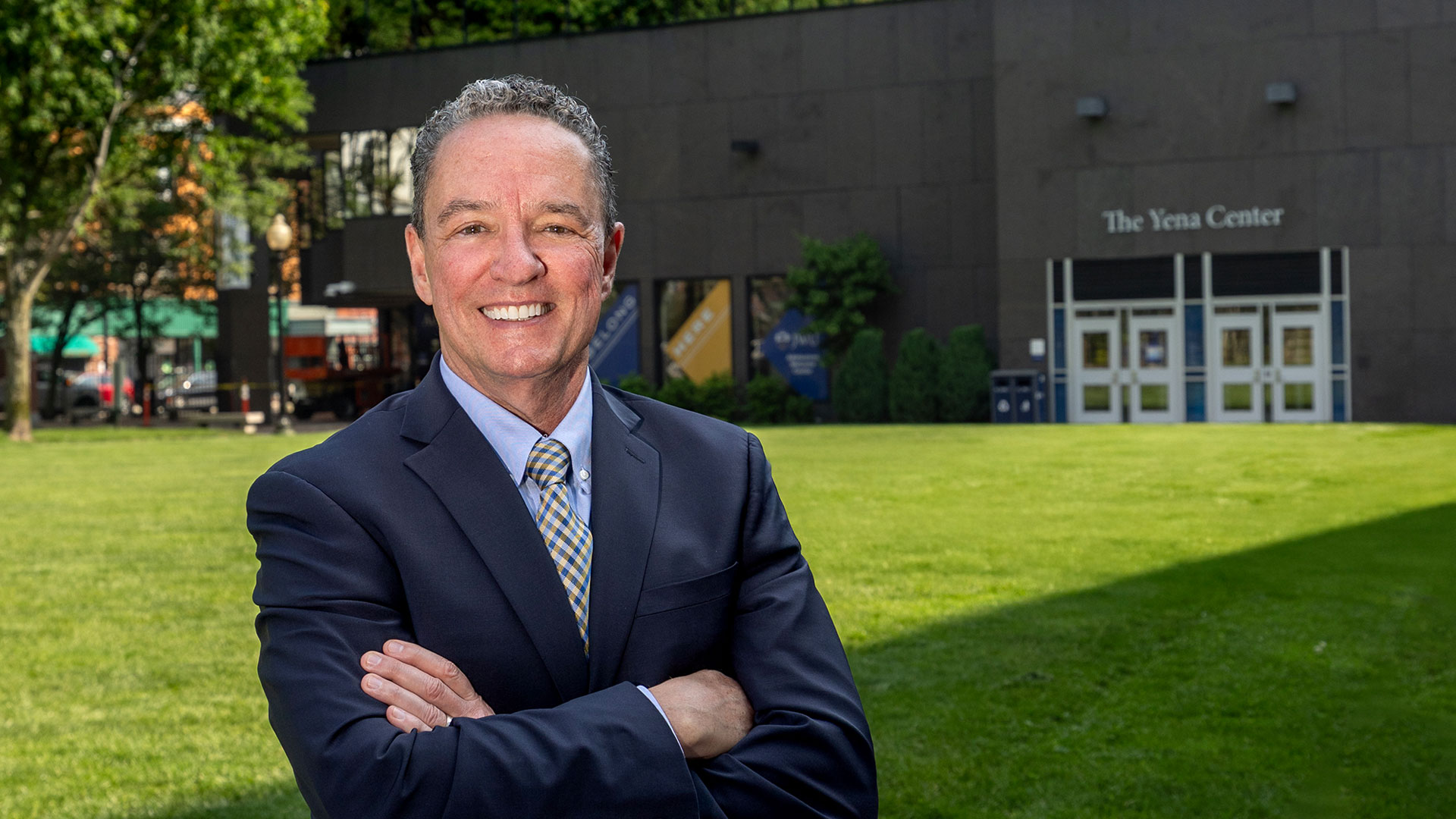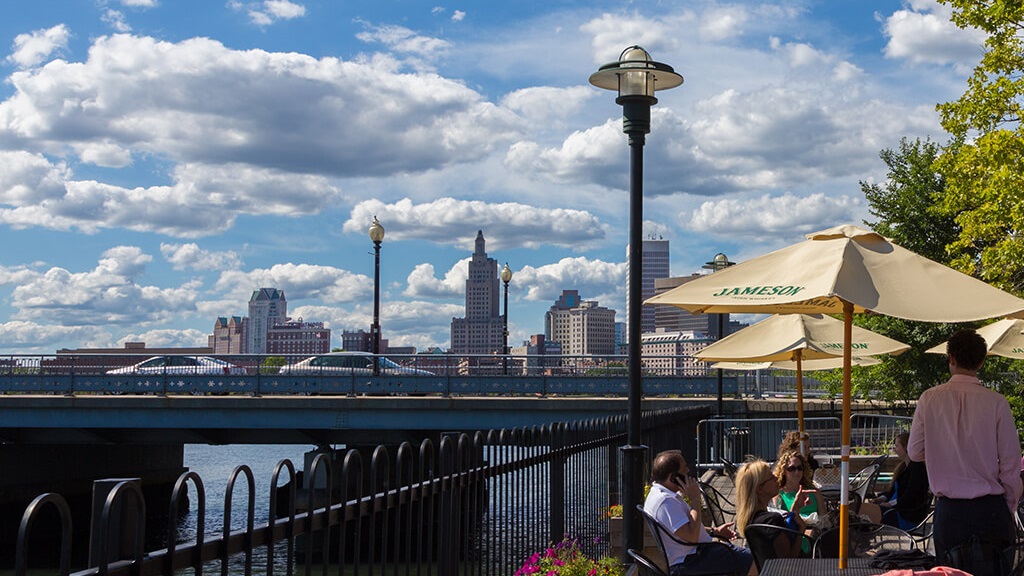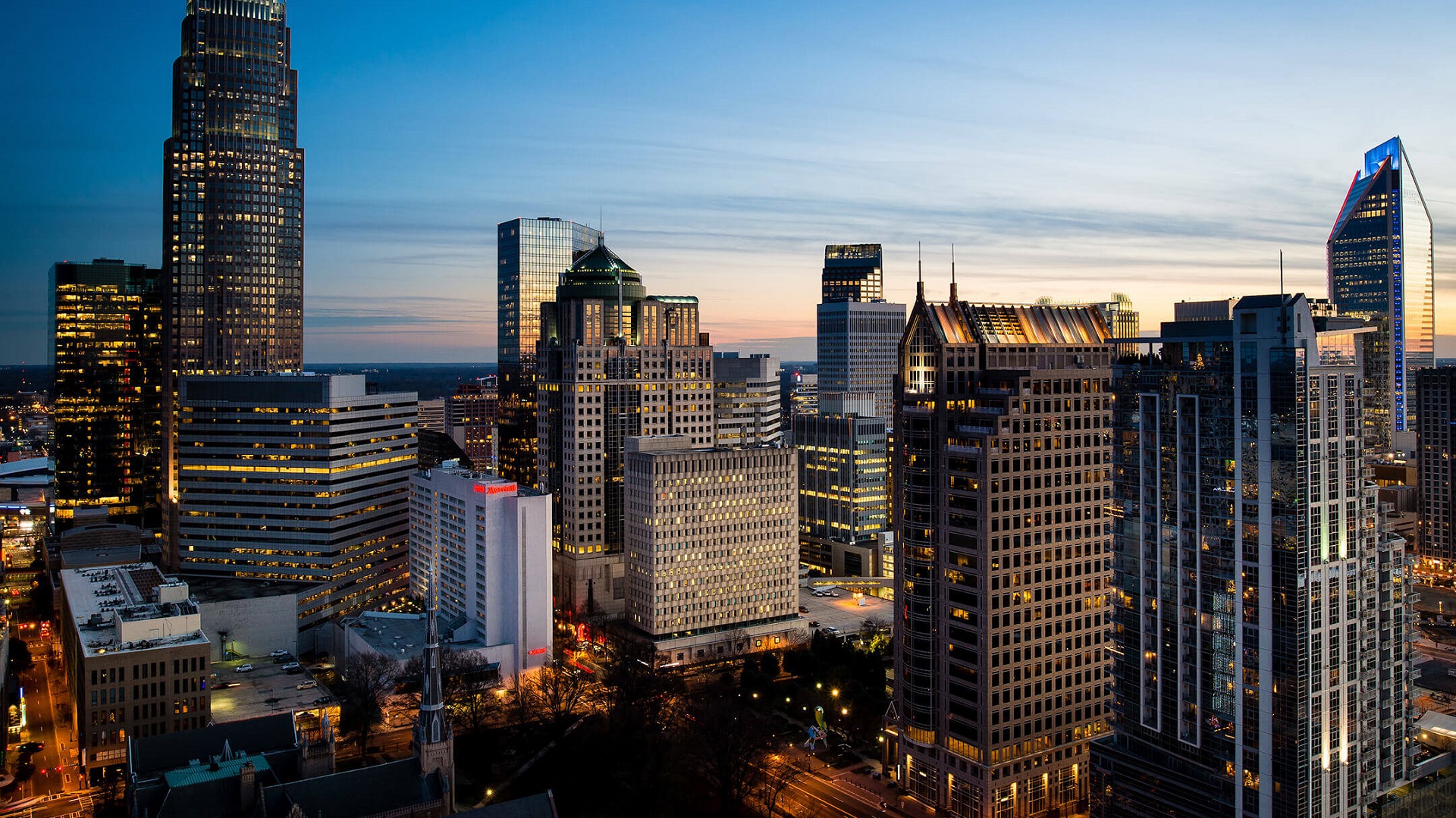How Art Is Raising JWU’s Awareness of Ukraine
Now experiencing their third grueling year of war since Russia’s full-scale invasion, Ukraine’s people have suffered unimaginable losses due to killed and displaced families and damaged or destroyed cities and towns. Yet the Ukrainians have displayed boundless courage and spirit through it all.
Ukrainian artist Ksenia Lesnaya captures that resiliency and strength in her traveling photography exhibit, “Vines and Threads for Ukraine” — which is available daily for viewing at the JWU Harborside Campus Library through Friday, April 5.
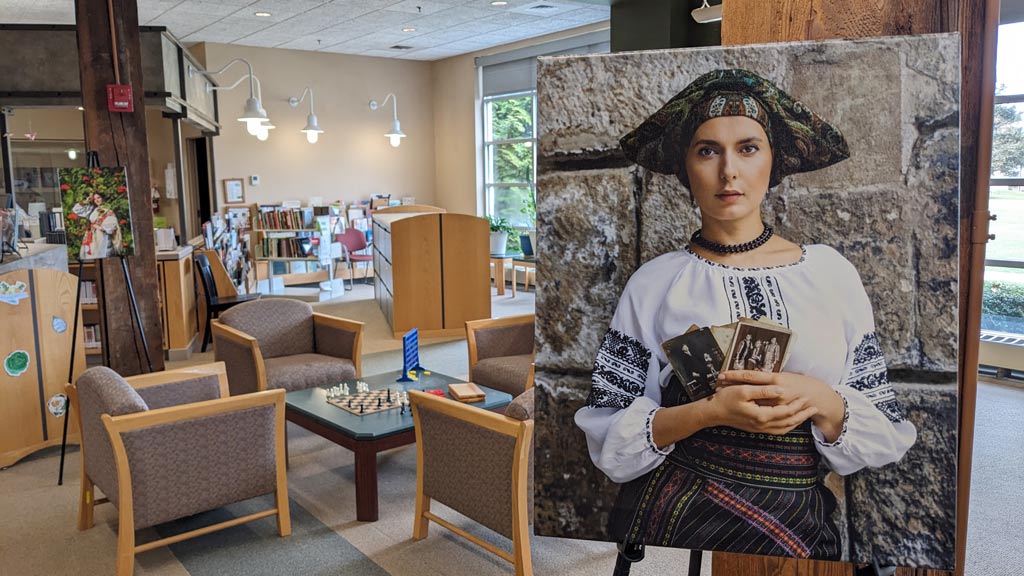
In the photos comprising “Vines and Threads for Ukraine,” the models wear 100- to 200-year-old vyshyvanki, which are traditional garments that symbolize Ukrainian regions, culture and history. The pictures share the woven beauty and history of Ukrainian culture while shedding light on Lesnaya’s people’s strength in the face of oppression. The exhibit has been shown everywhere from the Ukraine House in Washington, D.C. to the Providence Public Library — and now calls Johnson & Wales its temporary home.
Depicting Cultural Identity and Resistance
Lesnaya was forced by war to flee to Dresden, Germany, where she continues to spread awareness through her photographs. In addition to educating people through her art on such popular sites as Instagram and Facebook, Lesnaya connects with people around the world to exhibit her work.
The women depicted in Lesnaya’s photos, dressed in traditional Ukrainian clothing, include members of the Ukrainian choir Volya, which translates as “freedom.” After being forced to seek refugee status in Germany, Ukrainian women formed the choir in 2022 as an artistic protest of Russia’s illegal invasion. “None of us had ever sung before,” choir member Yulia Chopiak stated last year. “We’re IT technicians, accountants, doctors, translators — we aren’t singers, so we had to learn.”
Volya Choir performs benefit shows, raising money through their voices to help Ukrainian children who are living in occupied territory. Here they are giving a special performance to mark the second anniversary of Russia’s invasion of Ukraine:
Now, in addition to having their voices captured, their images are speaking as well.
“The main idea behind the exhibition is to show a centuries-long history woven into Ukrainian traditional attire, vyshyvanky, as well as showing the resilience of the Ukrainian nation during the war. It’s about how strong Ukrainian women are,” JWU Instructional Technologist Viktoriia Zykina explains while sporting her own vyshyvanky in celebration of her homeland. “No matter what's happening, we're still wearing our traditional attire, and that feels good.”
How Activism Brought Art to JWU
Lesnaya’s work resonates with Zykina, whose own family has been fractured by the war. Her mother managed to gain a visa to the United States in 2022 but arrived with a small suitcase, expecting to be able to return home soon; she is still here, with every hoped-for visit home postponed by new attacks on Ukrainian civilians. Zykina’s brother was displaced from his country while working as a sailor when the war broke out, while his then 12-year-old son, Zykina’s nephew, became one of the many Ukrainian children separated from parents due to the war. Zykina’s dear friend was pregnant when Russia invaded and, after briefly evacuating Kyiv to give birth, returned to the beleaguered capital city, preferring being near her mother and her support system to raising her child among strangers in a strange country. “I’m worried about her all the time,” Zykina confesses. Her dream right now is visiting her family and friends again in Ukraine, with the war over and everyone safe.
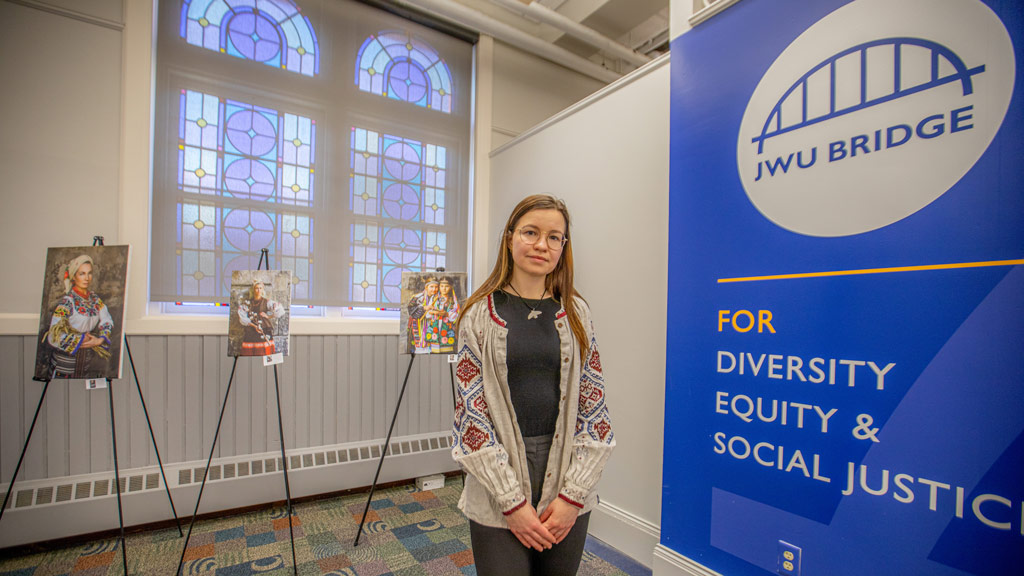
Zykina first learned of Lesnaya’s work after meeting local Ukrainian activist Inna Walker last October. Zykina had become more involved in activism herself since the start of the war, believing that spreading awareness could help the Ukrainian people, and she connected with Walker at the Ukraine Action Summit in Washington, D.C.
“Inna told me about these beautiful photographs and about Ksenia, whom she has followed online and established a deep connection with,” Zykina explains. “Since I joined the IDEA committee organized by The Bridge for Diversity, Equity and Social Justice, I became more interested in the ways we could expand diversity, inclusion and sense of belonging on campus. There haven’t been many Ukrainian events organized, and I thought it was a great opportunity to remind everyone that, unfortunately, the war is still happening — but also to showcase art and culture.”
“The Bridge collaborated with me in organizing this exhibit, and I am very grateful to Korina Ramsland Short and Michael Waugh for being so helpful and open to ideas,” Zykina continues. “We decided to organize this exhibition in March as it is Women’s History Month, and the photographs depict the strength and resilience of Ukrainian women. The photographer is also an example of a strong woman.”
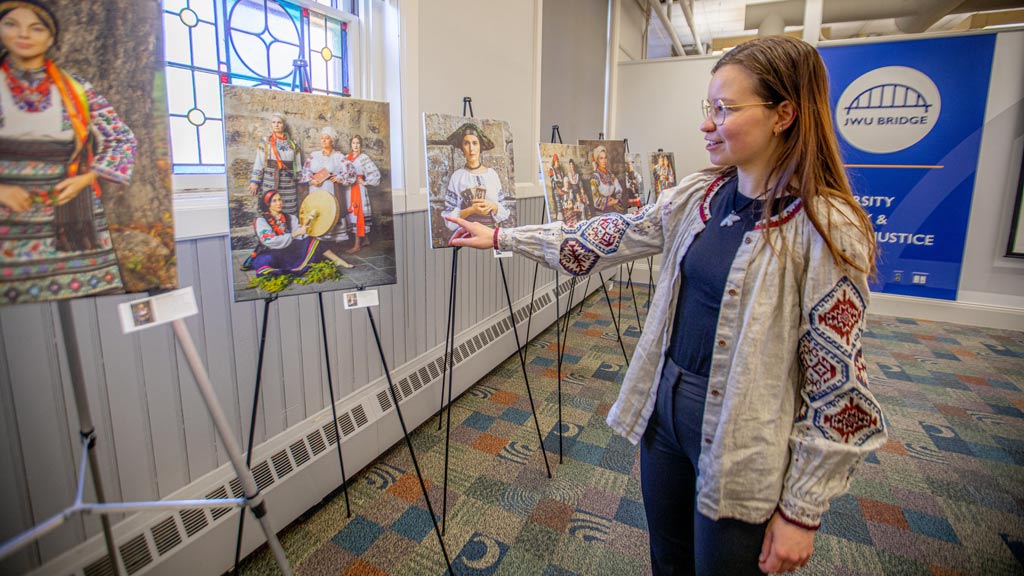
The exhibit ran for two weeks at The Bridge for Diversity, Equity and Social Justice on JWU’s Downcity Campus before moving to the Harborside Library in the Friedman Center on March 25. Between the two locations, Zykina hopes Lesnaya’s art can help raise the JWU community’s awareness about the atrocities that are happening as well as highlight Ukrainian culture.
What the Photos Depict
JWU students and staff can read about each photograph’s meaning in the descriptions attached to each photo. For instance, one group photo, “The Call for Freedom,” is titled after what resounds in the hearts of its female models. A woman holding a cabbage, with garlic tied around her waist, represents the lifegiving power of nature’s bounty. Viewers can spot the guelder-rose, a bright red flower that in Ukraine represents fertility and happiness, or a bandura, a traditional Ukrainian instrument that’s a cross between a harp and a lute. The beauty of nature is celebrated through blossoms embroidered on sleeves. A photo depicting heritage features a woman wearing a top embroidered by her late grandmother 35 years ago, and the photos she holds are of her great-grandparents and great-grandmother.
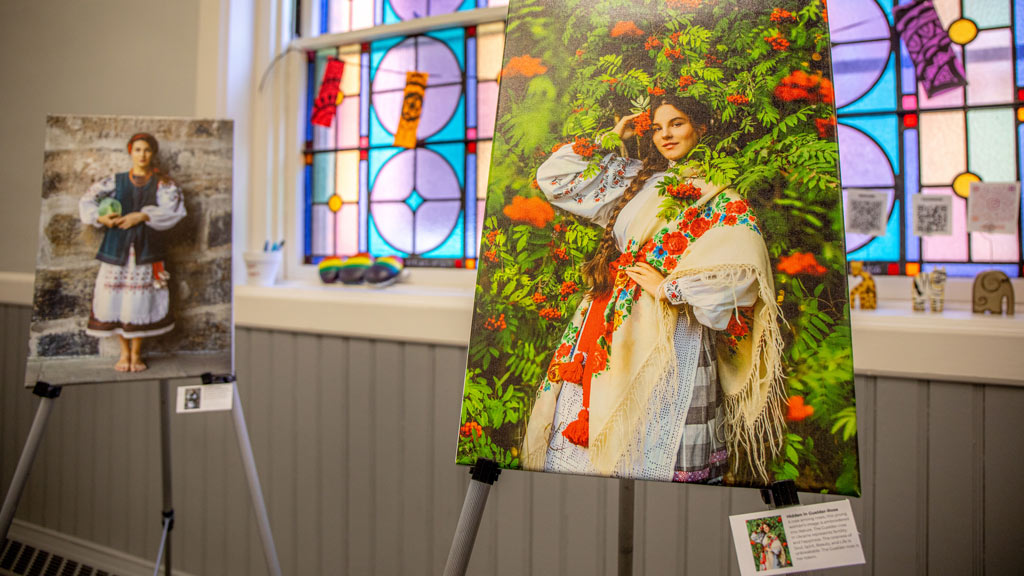
One recurring prop held by Lesnaya’s models is a battered book of poetry by Taras Shevchenko, a nineteenth-century poet who pushed for Ukraine’s independence from Russian oppression and was punished harshly by Russian leaders. Now history is repeating, and Shevchenko’s poems continue to resonate in Ukrainian hearts. Employing subversion through art, some of Lesnaya’s photos challenge Russian propaganda. For instance, in Russia’s propaganda campaign claiming that their invasion of Ukraine is simply a “special military operation,” Russian leaders have replaced the word “explosions” with the more innocuous word хлопо́к, or “clap.” Russian operatives who attempt to impersonate Ukrainians online often mistranslate “clap” from Russian to Ukrainian as “cotton,” revealing their duplicity. The appearance of cotton in Lesnaya’s photos is a nod to the truth and a jab at Russia’s attempts to downplay their actions.
How JWU’s Community Can Help
“The best the JWU community can do to help Ukraine is to be more aware of what is happening there,” Zykina says. She suggests supporting Ukrainian independent media, who are providing factual information, and on-ground organizations who, every time there is a new attack on innocent Ukrainian children and civilians, step up to help the newly hurt, hungry and homeless. The war has forced Zykina to become an activist, traveling to Washington to educate senators and representatives about the importance of continuing to support Ukraine. “Take part in local action by calling your local congressional representatives,” adds Zykina.
She also encourages students, faculty and staff to support local initiatives for Ukraine — or even create your own. “The Bridge and I are planning on organizing more Ukrainian events and exhibitions in the future, such as screening ‘20 Days in Mariupol’,” Zykina notes.
“I'm really pleased that Johnson & Wales was so helpful in helping me with this exhibit and being open to ideas,” she continues. “At first I wasn't sure whether as a staff member I could actually organize something. But it turned out that I could!”
